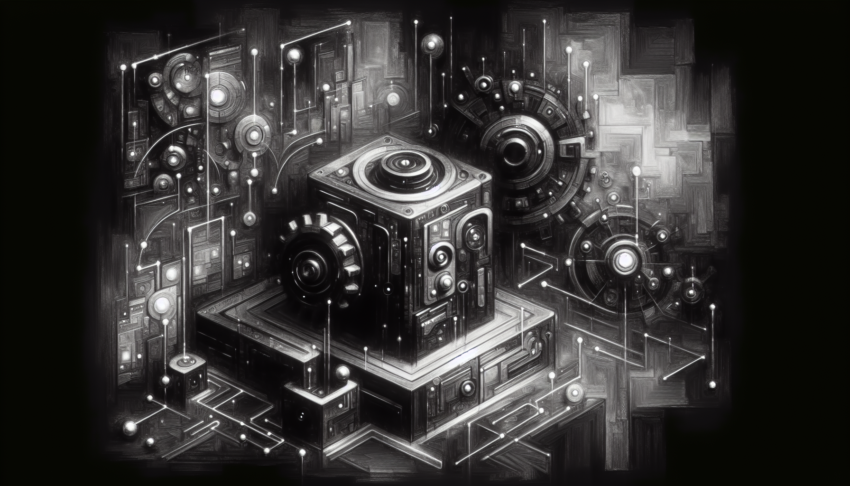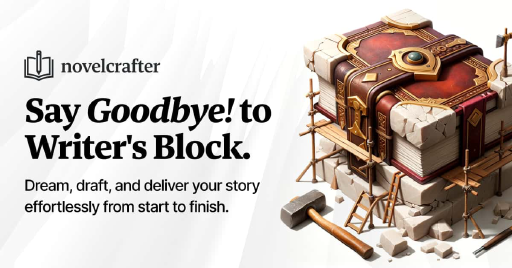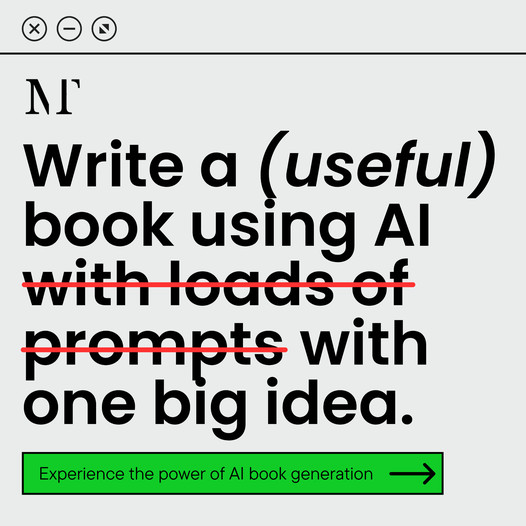Utilizing Story Planning Tools
Telling a great story takes planning, and that’s where story planning tools come in. These helpers give writers a strong base to build their tales on.
Importance of Story Organization
Getting your story together is a big deal if you want to grab your reader’s attention. A well-planned tale just clicks, making it easier for folks to follow along and get sucked into the story. Tools that help with planning aren’t just handy, they’re game-changers for managing plots, characters, and ideas. They make sure everything flows naturally:
| Benefit | What It Does |
|---|---|
| Clarity | Makes the story easier to understand. |
| Focus | Keeps the storyline on track. |
| Cohesion | Smoothly connects different parts of the story. |
Take timelines, for example—they’re great for keeping your characters and events in order. This helps keep the story believable and enjoyable.
Streamlining Novel Structure
Keeping it simple helps when you’re writing a novel. Tools like Story Map and Scene Maps are lifesavers for getting the story flow right and marking those plot twists. They let writers see their story from start to finish, making sure everything lines up perfectly.
Some go-to writing tools for getting your novel in shape are:
| Tool | Features |
|---|---|
| Plottr | Provides a colorful and organized layout with its timelines and templates like the Snowflake Method. Check out an alternative here. |
| Campfire Blaze | Perfect for building complex worlds and characters, great for fantasy and sci-fi. It offers comprehensive mapping and timeline options. More details can be found here. |
These tools do more than just lay out plots—they help manage all the ins and outs of character development and world-building. Embracing these tools can boost a writer’s output and create stories that readers won’t want to put down. For more on writing software for novelists, don’t miss our detailed list of resources.
Benefits of Timelines
Timelines are the trusty sidekick for writers wishing to tidy up their storytelling chaos. They aren’t just about catching the sequence of events—they’re the secret sauce for fleshing out characters and keeping the imaginary world on track.
Character Development Tool
Think of timelines as the story therapist. They lay out a character’s past, their scars, and what makes them tick. Suddenly, that character’s bizarre fear of pickles or their obsession with revenge makes sense when viewed against a backdrop of their life’s history. It’s like piecing together a puzzle of the character’s heart and mind, making them more real and lovable (or loathable).
| How You Use It | What It Does |
|---|---|
| Old Hurts | Shows past happenings that mess with a character’s head. |
| Character’s Drive | Spells out what’s pushing them towards or away from something. |
| Fear Map | Sheds light on their spooks triggered by yesteryear’s drama. |
Consistency in Worldbuilding
In the wild world of storytelling, timelines are your GPS. They’re all about keeping the order of things neat and making sure none of the plot points stray off the path. Remembering who outranks who, the order of story bits, and other key chunks becomes a breeze—not some wacky puzzle left to guesswork.
| What to Track | Why It Helps |
|---|---|
| Who’s Who | Keeps the pecking order clear and connections strong. |
| Plot Order | Basics, like what-came-first, stay untangled. |
| Key Points | Hangs on to bits that tip the plot scales. |
For those transitioning from a scattered writing mess to an organized blueprint, timelines are the magical bridge. They gather all those random thoughts and make sense of them, saving time and shaping the chaos into a tale to remember. Tools like One Stop for Writers are like the Swiss Army knife for creating timelines, letting authors stash important nuggets together and making the scribbling journey smooth. Writers, with their timelines in tow, can reel in the wild ideas while keeping it all neat and tidy on the page.
 What Poetry Feels Like
What Poetry Feels LikeStory Planning Software Features
If you’ve got a story itching to be told, keeping it organized can be half the battle. That’s where story planning software swoops in like a superhero, rescuing authors by providing the tools needed to line up all those pesky plot points and let creativity shine. Let’s take a look at how these digital assistants help writers keep their work tidy and on track.
Aiding Writing Efficiency
These nifty tools are like a Swiss Army knife for writers, offering a little bit of everything to boost productivity. From the beginning stages of coming up with ideas to the final touches of editing, story planning software holds your hand (at least digitally). Whether you’re drafting the next great novel, writing a gripping screenplay, or just trying to finish that essay without losing your mind, these tools are here to make the journey a little smoother. Think of Story Map and Scene Maps as your personal coaches, cheering you on to keep those plot twists turning like clockwork (Writers Helping Writers).
| Feature | Benefit |
|---|---|
| Brainstorming Tools | Sparks all those ‘aha!’ moments |
| Outlining Functions | Lays down the path to your story’s heart |
| Editing Capabilities | Makes your writing slicker than a greased pig |
| Customizable Timelines | Keeps the plot straight and true |
Enhancing Organization Methods
A jumbled story can be like trying to herd cats, but good organization makes it as easy as pie. This is where story planning software becomes your best pal, offering various features to categorize ideas, characters, and scenes like a pro librarian. Tools like Plottr and NovelPad will have you building character profiles and scene cards to corral your story bits into a great-looking narrative (Dabble).
| Organization Tool | Function |
|---|---|
| Scene Cards | Spreads events out neatly, like laying out a deck of cards |
| Character Profiles | Digs deep into everyone’s past, like an amateur detective |
| Tagging Features | Finds notes faster than you can say “Ctrl+F” |
Altogether, working these features into your routine can turbocharge your writing efforts. So, if you’re looking to delve deeper into what these tools offer, check out novelcrafter features for some more golden nuggets of wisdom.
Notable Story Planning Software
Choosing the right story planning buddy is a big deal for writers, and for those in the know, bibisco and Scrivener are two heavyweights in the ring. These tools are decked out with unique goodies that jazz up the writing journey, giving authors a leg up in shaping their tales.
bibisco: Novelists’ Best Friend
bibisco is often tagged as a writer’s delight, especially if you’re diving into novels. This software is like an all-you-can-use buffet for character shaping, plot juggling, and putting scenes in their places. What really takes the cake is the “interview” feature—imagine getting to know your characters as if they were alive, adding some real flavor to the storytelling!
| Feature | What’s in It for You |
|---|---|
| Character Coolness | Tools like relationship charts and graphs to keep character connections crystal clear. |
| Scene and Plot Wizardry | Shuffle around scenes and plots without breaking a sweat. |
| Freebie Zone | Some tools are up for grabs at no cost, perfect for those just starting out. |
| Progress Peeking | Get a peek at how your story’s shaping up with insight tools. |
Now, while bibisco might not win the beauty pageant for visuals, it’s a champ at nudging storytellers and giving them a treasure trove of analytical tools. If you’re a stickler for detail in your storytelling saga, bibisco’s got your back among writing software for novelists.
Scrivener: Master of Big Projects
Enter Scrivener, a favorite for juggling big writing projects like a pro. Its organizing superpowers let writers split their work into nice, bite-sized chunks. For those diving into weighty narratives like novels or screenplays, Scrivener feels like home.
| Feature | Description |
|---|---|
| All-in-One Workspace | Keeps drafts, notes, and research snugly together. |
| Customize Your Way | Layout options include a handy corkboard and outlining screen. |
| Easy Imports and Exports | Support for different formats, and shuffles work into shape for publishing. |
| Notes Galore | Stash character notes, research nuggets, and theme thoughts within reach. |
Authors often rave about how Scrivener plays well with any kind of genre, making it a go-to pick for scribblers from all walks. If you’re chasing top-notch tools that can churn out stories with precision, best tools for fiction authors open up new vistas.
Both bibisco and Scrivener are smashing allies for writers keen to polish their story-planning game. Each has its own sweet spot, catering to different needs in the world of writing.
Genre-specific Writing Tools
Writers, in their quest to tell captivating stories, often lean on tools that are just right for the genre they’re diving into. Whether they’re weaving suspenseful tales or crafting fantastical worlds, there are tools that can make a real difference.
Thriller & Mystery Genres
Authors of thrillers and mysteries are like word detectives. They need tools that can handle the twisty plots and intricate storylines. Plottr is a top pick for this genre. Picture it as the detective’s notepad, offering a way to map out plots with visual flair. It lets writers sketch out complex plots, jot down subplots, and track character arcs with ease—the kind of stuff that keeps readers clutching the edges of their seats.
| Tool | Features |
|---|---|
| Plottr | Maps out plots, subplot handling, tracks character arcs |
And if Plottr is the detective’s notepad, then Scrivener is the command center. Equipped to juggle large-scale projects, it’s great for writers juggling multiple character viewpoints and intricate plots all at once.
Fantasy & Sci-fi Genres
Fantasy and sci-fi writers are the architects of new worlds. They often need squat a bit more than just a pad and pencil to spin their tales. Enter Campfire Blaze. Think of it as the ultimate imagination toolkit—helping to design those complex worlds with maps, character profiles, and detailed timelines. It’s like having a best friend who remembers all the tiny details so you don’t have to.
| Tool | Features |
|---|---|
| Campfire Blaze | World creation, character details, timeline planning |
Utilizing these genre-specific tools might not just make writing easier but can also crank up the storytelling juice. If you’re curious about more tools that might tickle your writing fancy, swing by the best tools for fiction authors for some extra inspiration.
Challenges of Storytelling Methods
Time-Intensive Crafting
Writing a good story is often a marathon, not a sprint. Authors invest a ton of time planning, scribbling, and tweaking to get their tales just right. From cooking up ideas to tweaking drafts, each phase eats up hours. It’s no wonder this can be tough for writers, especially those balancing tight schedules or juggling many tasks (Kapable Club).
| Story Development Stage | Estimated Time Investment |
|---|---|
| Planning | 10-20 hours |
| Writing | 50-100 hours |
| Revising | 15-30 hours |
| Final Edits | 5-15 hours |
Spending all this time on storytelling can scare off some authors or lead to serious burnout, especially with ambitious projects or short deadlines. Using smart story planning tools can help get this chaos under control.
Dependency on Story Engagement
When storytellers try to captivate their crowd, they sometimes lean too heavily on flashy narratives and pulling heartstrings. This reliance can backfire when they need to churn out more straightforward or fact-based content. If stories are always high on excitement, readers might start expecting too much and find it hard to enjoy simpler stuff (Kapable Club).
This storytelling crutch might even stop authors from mixing up their writing styles. If they stick with only narrative-driven tales, they could miss connecting with a wider range of readers or diving into different topics. Trying out various writing styles can help writers stay sharp and creative in their work.
Tools like novelcrafter with its features can ease some of these woes by offering a framework for both creative and no-nonsense writing tasks.


 Grab my poetry book, 'we're all just wanderers in the end' Here
Grab my poetry book, 'we're all just wanderers in the end' Here AD: Your Book Finally Written...
AD: Your Book Finally Written...